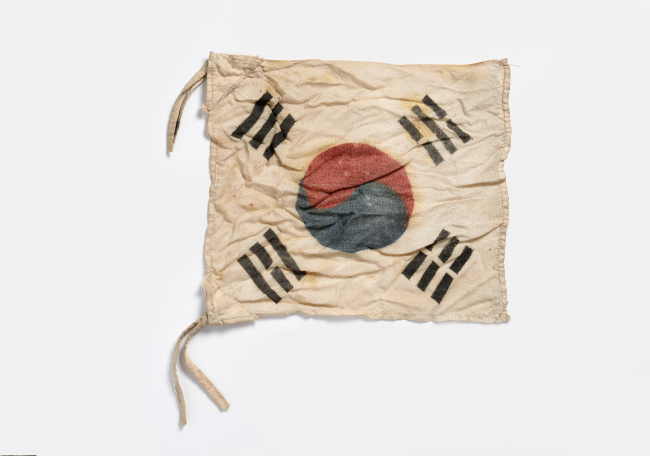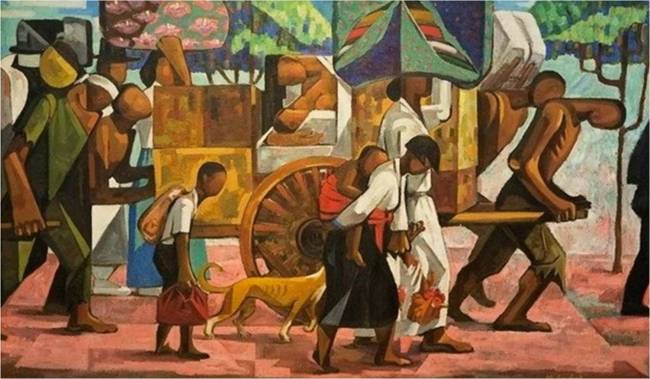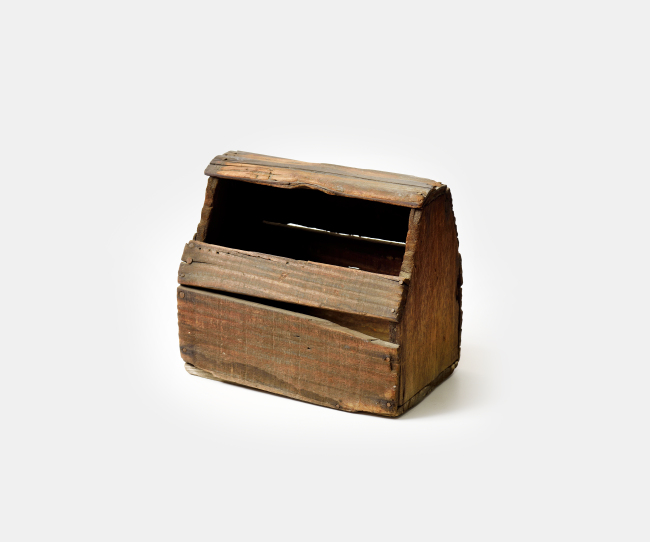Korea is celebrating the 70th anniversary of its independence from Japan’s colonial rule with a slew of cultural events this week.
Amid the festive mood, museums are presenting exhibitions and special events that provide an understanding of various aspects of the anniversary and how life in Korea has changed over the past seven decades.
Museums will also open for free during the three-day weekend starting Friday, as Aug. 14 was designated a special holiday.
The turbulent and dynamic lives of Koreans over the past decades are summed up in paintings and photographs at two museums in Seoul.
 |
Taegukgi (The National Museum of Korean Contemporary History) |
The National Museum of Modern and Contemporary Art, Korea presents 270 works of art by modern and contemporary Korean artists in the commemorative exhibition of the 70th anniversary of liberation that offers a glimpse of major historical events through the eyes of the artists.
Subtitled “Uproarious, Heated and Inundated,” the exhibition gathers masterpieces of Korean artists, depicting the turbulent modern history of Korea, dynamic social and economic transitions and lives and dreams of citizens.
 |
“The Korean War” by Lee Soo-auck (Private Collection) |
Divided into three parts, the exhibition begins with symbolic paintings that portray the Korean War and the aftermath. Paintings by Lee Soo-auck depict scenes of people taking refuge from the war and of ruins after bombings. Despite the depressing reality, the artist used soft and bright colors to reflect hope for peace and the stable life many Koreans dreamed of.
Photographer Joo Myung-duck’s snapshots capture overlooked scenes in the lives of Koreans amid major social events in the 1970s.
A 1971 photo captures fortune-telling houses that gathered under the Youngdo Bridge of Busan. The photo reveals stories of separated families who frequently visit fortune-tellers, desperate for any clue to the whereabouts of their missing family members during the Korean War.
 |
“Document - Under the Youngdo Bridge in Busan 1971” by Joo Myung-duck (MMCA) |
The exhibition continues with paintings, sculptures and installations that explore the fast economic growth and life on the other side of the rapid development, as well as the desire for democratization and cultural diversity of the present Korea. On Aug. 15, the museum will hold a lecture by a culture critic on the special anniversary exhibition and educational programs for families with children.
“Picturing Korea,” a photo exhibition at the National Museum of Korean Contemporary History offers a visual, chronological guide to major historical events over the past 70 years. The museum features some 100 photographs and videos that offer a glimpse of 70 historical events from the 1940s through the present.
They are symbolic photos depicting major events from each decade such as the Aug. 15 independence, the Korean War, the establishment of the South Korean government, major economic achievements such as the first car production, the first subway station opening and democratization movements throughout the 1980s.
It shows some of the recent events such as the global popularity of “Gangnam Style,” the tragic Sewol ferry sinking and the abolishment of the adultery law, as well.
The museum also presents “70 Voices of 70 Years,” examining the personal lives of Koreans represented through a variety of objects, such as family portraits, ID cards, clothes and electronic products.
 |
Shoe brush toolbox (The National Museum of Korean Contemporary History) |
An old shoe brush toolbox offers a glimpse of the struggle after the war in the 1950s. A written flier made during the April 19 Revolution shows the strong desire for democracy and social justice against the then authoritarian government.
More objects are on display, including a folding cellular phone developed in 2002 by a cellphone hardware engineer at the Korean manufacturer Pantech; seals and counting frames long used by a banker who was forced to retire during the Asian financial crisis in 1997 and a portrait of a family that defected from North Korea to the South.
The MMCA exhibition runs through Oct. 11 at the Seoul Museum in Samcheong-ro, Seoul. The National Museum of Korean Contemporary History holds “Picturing Korea” and “70 Voices of 70 Years” until Sept. 29. For more information, visit
www.mmca.go.kr and
www.much.go.kr.
By Lee Woo-young (
wylee@heraldcorp.com)










![[Weekender] Korea's traditional sauce culture gains global recognition](http://res.heraldm.com/phpwas/restmb_idxmake.php?idx=644&simg=/content/image/2024/11/21/20241121050153_0.jpg)
